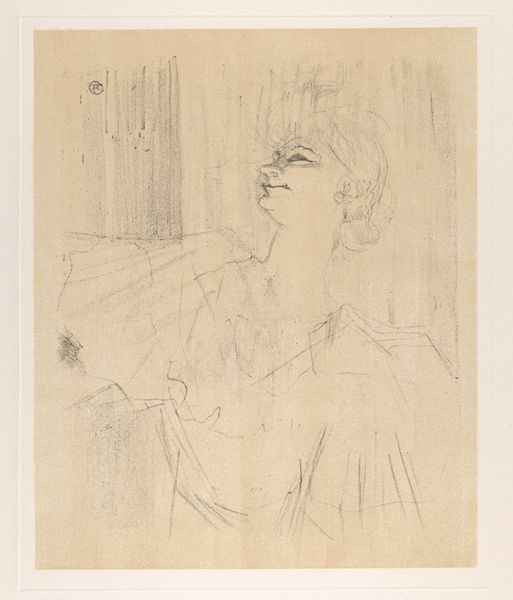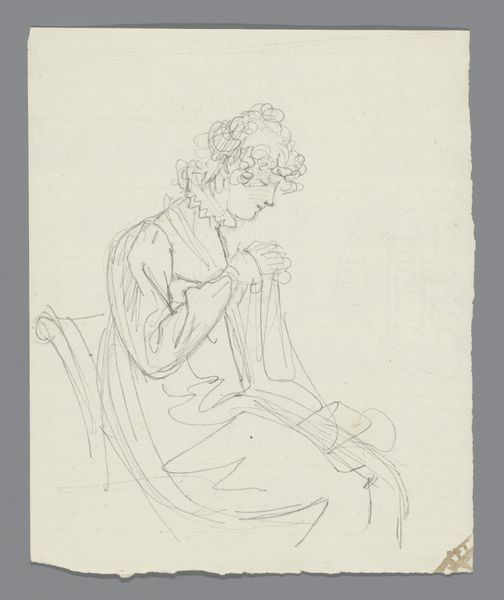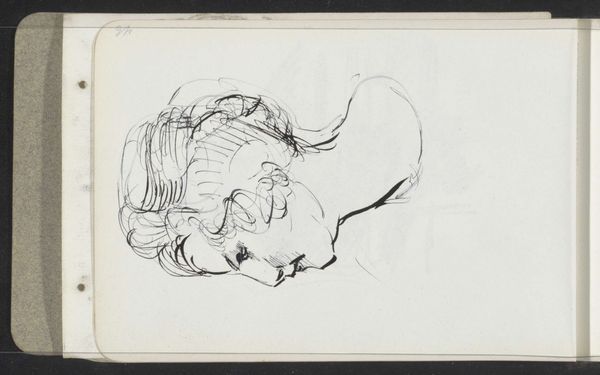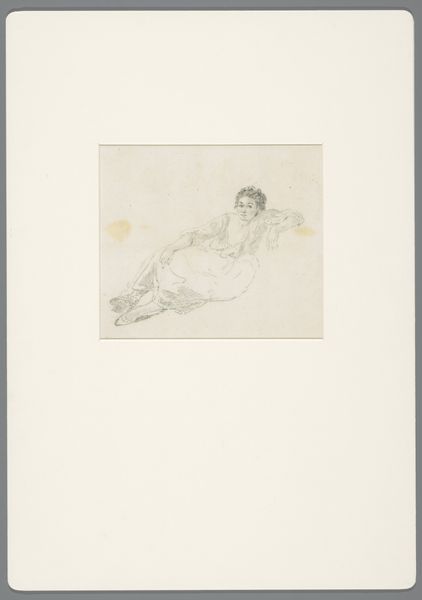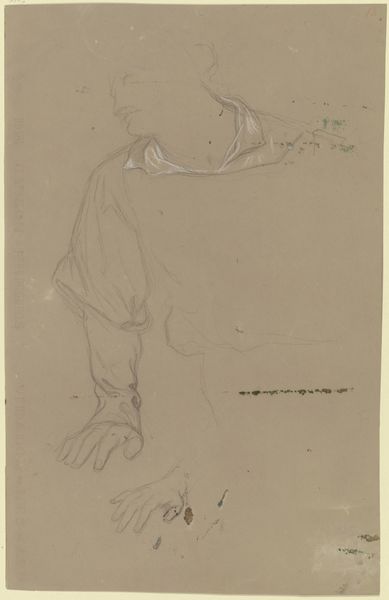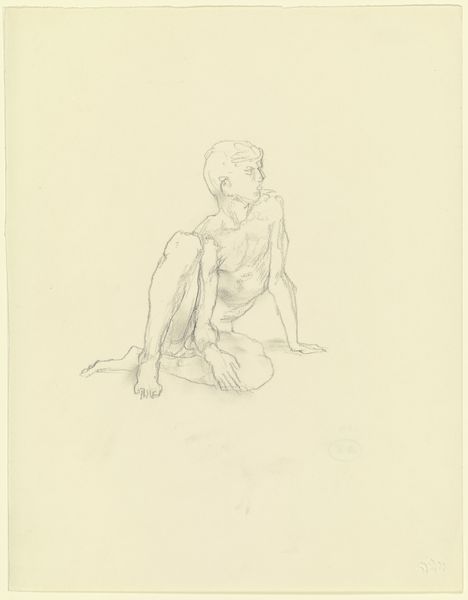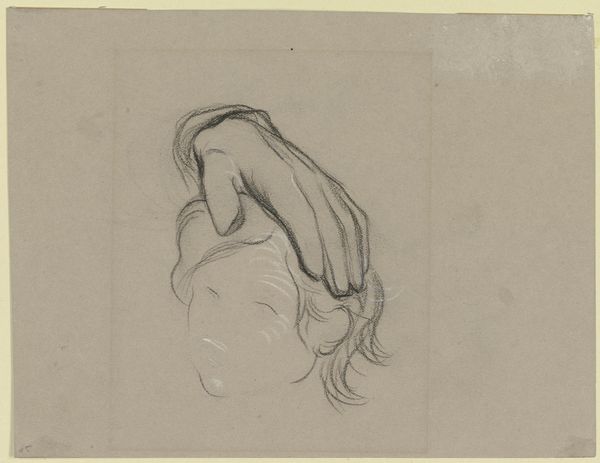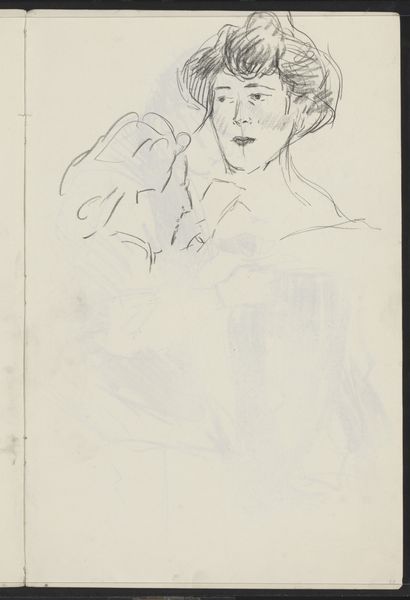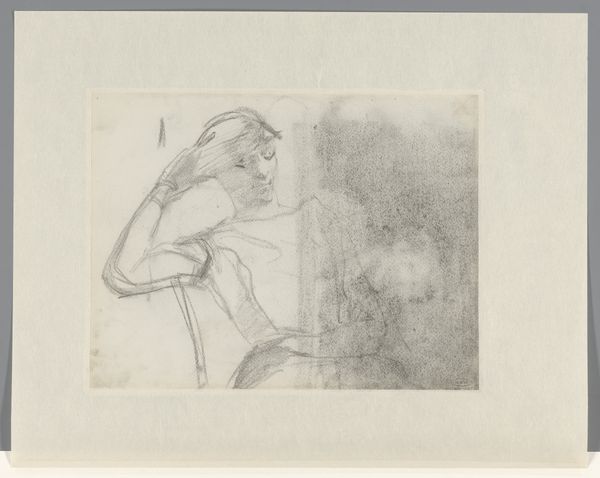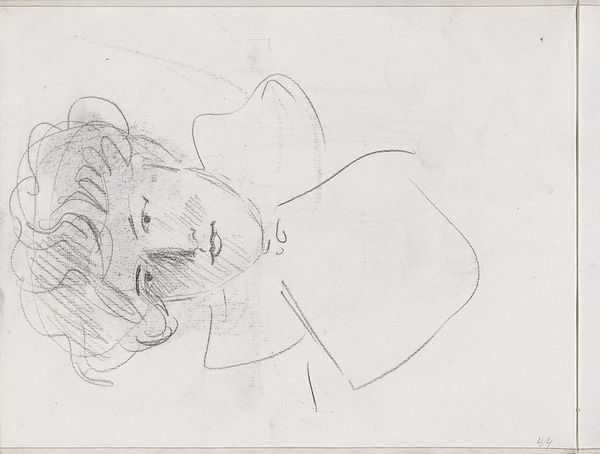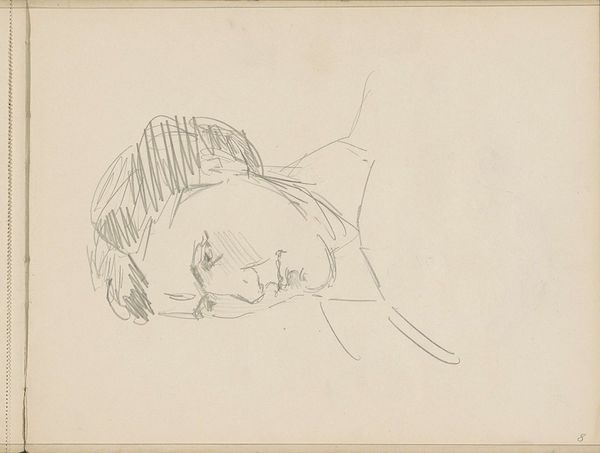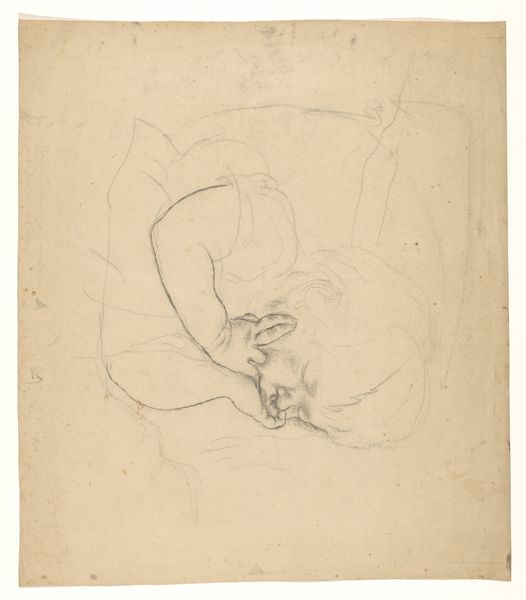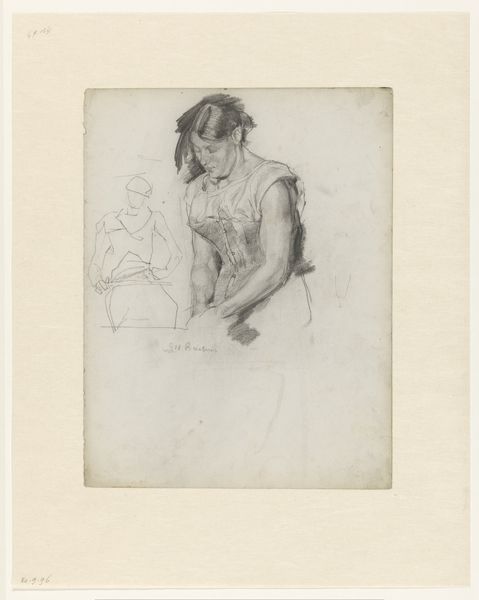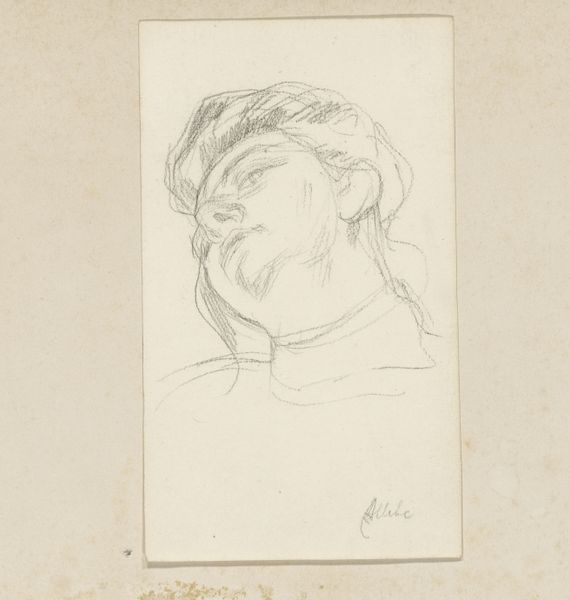
drawing, paper, pencil
#
portrait
#
drawing
#
figuration
#
paper
#
romanticism
#
pencil
#
line
#
academic-art
Dimensions: height 237 mm, width 197 mm
Copyright: Rijks Museum: Open Domain
Curator: Here we have "Voorovergebogen vrouwenhoofd," which translates to "Forward-Bending Woman's Head," a drawing completed between 1780 and 1849 by David-Pierre Giottino Humbert de Superville, held in the Rijksmuseum collection. Editor: It's striking, this pencil drawing; so simple yet emotionally resonant. The bowed head, the delicate curls escaping the updo – it evokes a sense of melancholy, or perhaps quiet contemplation. Curator: It speaks to the Romantic era's focus on interiority, doesn't it? But I'm also drawn to how the subject is positioned. Consider the politics embedded in posture; who is afforded the luxury to look downward, inward, and why? Editor: I see it too. Her downcast gaze… it reminds me of the visual language of mourning, or even of shame. Throughout history, we see similar depictions used to convey female submissiveness or vulnerability. The softly draped fabric adds another layer to this…perhaps signifying concealment? Curator: Yes, concealment is key here. While formally within the portraiture tradition, Superville perhaps aims at something deeper, more aligned with Romanticism’s turn towards representing psychological states. Is this woman experiencing internalized oppression, or choosing a moment of respite from societal expectation? What narratives were permitted, which foreclosed? Editor: The symbol of downward-cast eyes is fascinating in art. It speaks to humility and devotion across many cultures but it's more ambiguous here. We can ask whether the artist intentionally employed these recognizable symbols. Also her elaborate hairstyle contradicts subservience and reflects high social status. Curator: It creates an undeniable tension between conformity and rebellion, an idea reinforced through the precision of his academic style but it still contains a delicate rendering of an expressive, emotionally complex, woman. Editor: A delicate and timeless study indeed. It seems that even simple portraits offer a profound meditation on the emotional experiences of women in those eras. Curator: Precisely. Even a seemingly modest drawing compels us to examine power, representation, and the unspoken stories embedded within an image.
Comments
No comments
Be the first to comment and join the conversation on the ultimate creative platform.
